Troubleshooting to solve the problem: why does the pressure in the heating system of a private house drop, but there are no leaks?
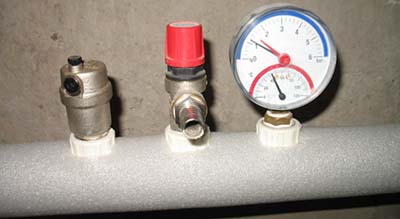
The standard pressure of the heating system is 1.5-2 atmospheres. In some positions the number goes beyond the limit, which may be due to one or more reasons.
Factors that trigger problems may appear regardless of the correct installation.
Why does the pressure in a closed heating system drop and jump?
They highlight 4 factors, which most often cause problems when blood pressure drops.
Leakage
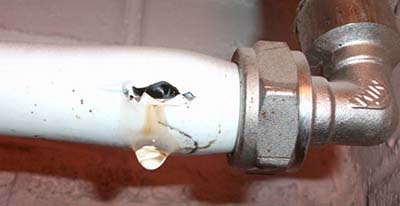
This is the first thing to look for when the pressure gauge readings are abnormal. First, inspect pipe joints and valves.
You also need to walk along all the heating pipes and look for puddles, traces of water, and corrosion.
For a full check you need:
- Turn off the pumps.
- Take pressure measurements in the system, while it is in a static state.
- If the readings drop, then there is a leak. Otherwise, you should look for the fault elsewhere.
This may not work in a plastic pipe system. To find a leak in such an environment, you will need to use thermal imager. You can also test by passing air through the harness.
Important! Both methods involve an invitation an experienced plumber.
Troubleshooting methods:
- replacement of part of the pipeline;
- application of a new seal;
- securing loose connections.
Airlock
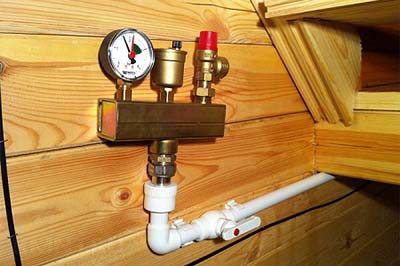
It is formed as a result of the loss of coolant. It leads to:
- pressure drop in closed piping, reducing the speed of movement of liquid through pipes;
- the occurrence of noise and vibration in the system;
- weakening of connections;
- pipeline corrosion.
Air enters the piping together with the working fluid or as a result of the following factors:
- long-term downtime of heating in the building;
- incorrect installation or project calculations;
- low pressure in pipes;
- improper sealing of joints;
- current repair work.
To solve the problem it is necessary install recharge heating. Such a system automatically replenishes the lack of liquid in the pipes. With its help, it is possible to clean the piping from gaseous substances. It is not very expensive, but requires complex installation.
To release air, it is also sufficient to use special cranes, which are placed at certain intervals along the entire piping. With their help, gas bubbles are released, if necessary. To do this:
- The location of the problem is determined.
- The tap opens at the nearest point.
- A basin is placed under the valve.
- Part of the coolant and air are discharged.
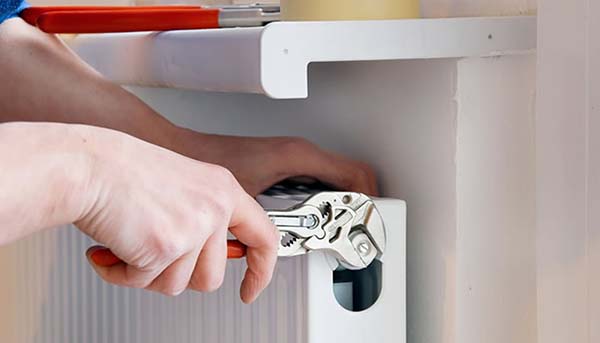
Photo 1. The technician unscrews the tap on the radiator when the pressure in the system has dropped in order to release some of the air and coolant.
Aluminum radiator
The pressure problem often appears as a result of installing such batteries. Why does this happen? The coolant, passing through the piping, oxidizes aluminum, causing rust and the release of hydrogen gas.
As a result, the pipelines deteriorate, the pressure becomes unstable and begins to decrease. Time can solve this problem, during which oxidation will stop. And also considered installation of new radiators.
Damage to a gas boiler in a private house
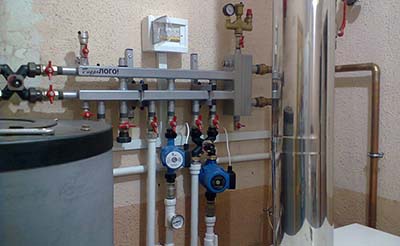
Malfunctions are usually detected in one of three components.
Problems arise in gas boilers if they are wall-mounted and have a built-in heat exchanger.
The last one is the only component that may be damaged.
The following happen:
- manufacturing defect;
- microcracks;
- clogged pipe due to scale.
Regardless of the cause, complex repairs are required. It is recommended to invite a specialist for diagnostics.
To find the problematic pump, it is necessary to disconnect them from the system one by one. Then conduct test runs, noting pressure gauge readings. The device without which the pressure drops when switched on is broken. To repair it, it is enough to replace it with a new one. In some cases, it is wrapped with a new seal.
It is necessary to clean the contamination of the suction passages. Blockages occur due to mechanical impurities in the coolant, corrosion and crystallization of salts. To prevent breakdowns, periodically turn off the system for a short period of time. To protect against dirt install filter.
Expansion tanks - cylinders or membrane structures. Regardless of the type, the container is made of metal and equipped with a rubber part. The latter wears out during operation, which leads to the formation of microcracks and other defectsDue to damage, the ratio of adjacent chambers changes, which leads to a failure in the system.
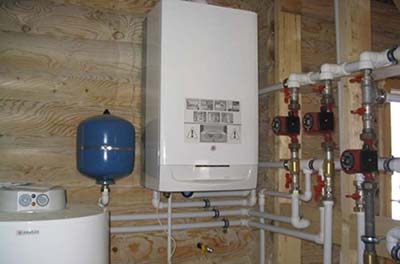
A similar problem is being solved replacement of failed parts. In extreme cases, a new device is installed. The latter should be avoided, since re-installation will require the removal of the old device.
It also leads to a decrease in pressure Incorrect calculation of the expansion tank. In preparation for creating heating, they create a project.
If it is necessary to include a tank in the system, the required volume is determined. It is necessary to take into account coefficient of thermal expansionWhen choosing a device, follow the advice of a plumber and the manufacturer.
Attention! Insufficient volume leads to overfilling, which causes pressure to increase. This can lead to the formation of cracks and leaks. In such a situation, the tank and damaged pipelines will need to be replaced.
When the pressure drops: troubleshooting methods
Having discovered the problem, it must be solved. The method of repair in a private house depends on the factor that caused the breakdown. Possible:
- Removal and replacement of damaged trim element.
- Securing loose components.
- Winding pipelines with sealant.
- Use of taps for air release or heating refill.
- Replacing radiators.
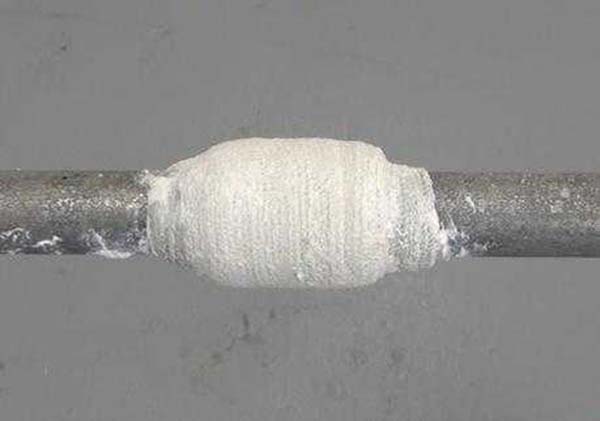
Photo 2. A pipeline wrapped in sealant that has developed a leak, causing pressure surges in the system.
Repairs are carried out by professional plumberA specialist should also be invited for consultation and problem determination.
Reasons why it increases and there are no leaks
This factor is, in most cases, caused by a malfunction of the expansion tank:
- the rubber membrane is damaged;
- the device's volume is small;
- The tank is installed in close proximity to the circulation pump.
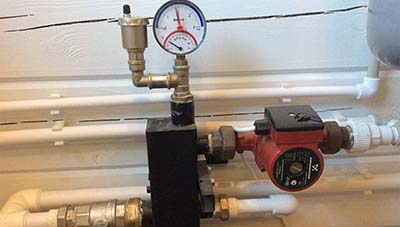
When the pressure jumps, it is also associated with the formation of air locks due to incorrect filling coolant systems.
In other cases:
- the shut-off valves are partially blocked;
- the filter is clogged;
- automation is faulty;
- One of the taps does not hold the pressure.
The solution depends on the problem. In some cases, replacing the component is enough, in others - Call a plumber.
Useful video
The video talks about the reasons that can lead to pressure surges in the heating system.
Recommendations
Regardless of the malfunction, to detect and eliminate invite a specialistHe will help you find it and advise you on how to solve the problem at a lower cost.





